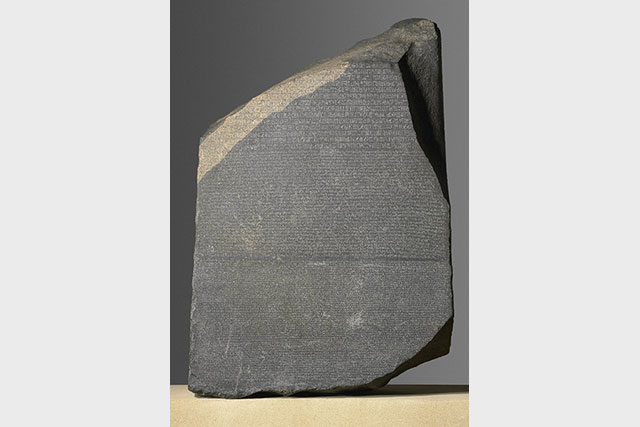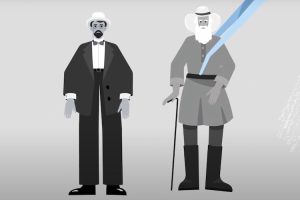The History in Our Genes
Exploring genetic similarities between human populations can help to fill gaps in history books

The Rosetta Stone is a fragment of an Ancient Egyptian granodiorite stela inscribed with a priestly decree establishing the royal cult of the 13-year-old king, Ptolemy V in 196 BC. The decree is written in three different scripts: Greek, Ancient Egyptian hieroglyphs and Demotic (a cursive Egyptian script). Discovered at the coastal town of Rosetta (el-Rashid) during Napoleon’s Egyptian campaign in 1799, the inscription’s combination of scripts allowed Jean-François Champollion (1790–1832) to begin to read Egyptian hieroglyphs in the 1820s, for the first time since antiquity.
The Ptolemaic period witnessed a fusion of Greek and Egyptian cultures, in which Greek was the official language of the court, while hieroglyphs were used only by the Egyptian priests in formal contexts, and Demotic was an Egyptian script used for everyday purposes. The trilingual form of the decree embodies the multicultural society which created it. Although it is named after its modern find-spot, it is uncertain in which temple the stela was originally erected. It was not an unusual inscription for the period, but it has subsequently acquired a unique importance in the history of modern European Egyptology, as it helped scholars realise that the pictorial hieroglyphs were not primarily symbolic images, but signs recording the sounds of the Ancient Egyptian language, which was already indirectly known through its medieval descendant, Coptic.
The decipherment of hieroglyphs opened up the language and textual culture of an entire civilization, with over three thousand years of historical, literary and administrative records. Although other inscriptions and factors played a crucial role in the initial decipherment, the Rosetta Stone captured the public’s imagination, and it has become an icon of all attempts to decipher other cultures and even other worlds— so much so that the space probe launched by the European Space Agency in 2004 was named Rosetta. The Rosetta Stone is the most popular single object in the British Museum.
1) British Museum Website on the Rosetta Stone
2) R. B. Parkinson, The Rosetta Stone. British Museum Objects in Focus; London: The British Museum Press 2005.
Edited by John Mark Shorack

Exploring genetic similarities between human populations can help to fill gaps in history books

MIT Prof. Mark Jarzombek on love to turquoise in Mayan culture, mobile architecture of Plains Indians, and get...

Historian Mark Jarzombek on the notion of seemingly primitive, worldwide evolution of the housing, and the fat...